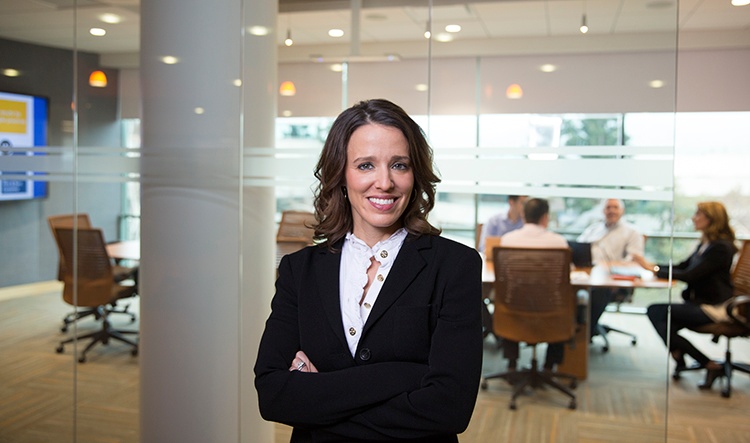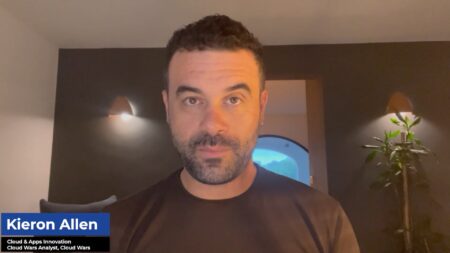As SaaS powerhouse Workday helps thousands of customers around the world deal with the COVID-19 crisis, chief people officer Ashley Goldsmith is leading Workday’s own efforts to carefully orchestrate a return to work with its overriding priority of employee safety.
“For Workday, employee safety and well-being has been and always will be our top priority. So in everything we do, we’re keeping employee safety front and center,” Goldsmith said in a recent Zoom call.

Among the issues and decisions Goldsmith and her team have been analyzing:
when to re-open offices;
where to re-open offices;
how to re-open those facilities;
how to determine which employees are among the first to return; and
how to simultaneously continue making the remote-work experience as fulfilling as possible.
“We regularly survey our employees via weekly touch-ins to gauge their sentiment and the type of experiences they’re having,” Goldsmith said.
And while 86% of respondents now say they feel great about Workday and being a part of the company during these challenging times, 76% say they’re not yet ready to head back to the office and would prefer to wait until there’s more certainty about their safety.
“We understand those concerns, and we’re doing everything we can to ensure that our employees—or Workmates—understand that the decision to return to the office is theirs, and not the company’s,” said Goldsmith.
At the same time, other employees feel, for a variety of reasons, that working from home is simply not the right solution and are eager to evaluate a return to the office.
“There’s no one-size-fits-all solution, so we’re moving forward with not only a broad framework for how to return to the office, but also with a lot of flexibility built in,” said Goldsmith.
“Workday has Workmates with a wide range of home environments: some live in full houses with plenty of space and family members around, others live alone and have challenges with isolation, and others may be sharing an apartment with roommates and have to live and work all day long in a single room.”
In particular, Goldsmith said, people living and working in “high-density cities” have had the strongest tendency to discover that WFH is simply not sustainable.
For them and for others in less-crowded environments, the weekly surveys, along with regular conversations with employees from all across the company and all around the world, reveal an emerging image of the office/workplace as a “hub.”
“Some people simply miss working with their teams in a collaborative way that involves being in the same physical location, and others say they simply miss the social interaction that a traditional office can offer,” Goldsmith said.
“So we’re trying to imagine the new workplace as a hub that will accommodate all of that and not necessarily on a full-time basis, but as a hub for events and projects.”
Goldsmith then outlined Workday’s 2-phase plan for returning to work, which has already been put into place in Auckland, New Zealand; Hong Kong; Seoul, South Korea; and now Dublin, Ireland.
“Even before we launched Phase 1, we had to meet two overarching criteria: all plans and processes had to meet or exceed all local government requirements and specifications, and we had to be sure that all employees understood that going back to the office or not is totally their choice. We let them know the company’s giving them all the flexibility in the world to make their own health and safety decisions.”
For Workday, here’s what Phase 1 looks like:
- target of 20% capacity in offices;
- employees opt in;
- everyone offers a “health attestation” on a daily basis;
- the Workday facility provides masks, wipes, sanitizers;
- workstations are fewer in number and are spread around;
- the only thing on desks are monitors;
- conference rooms are limited; and
- break rooms have been modified to offer a limited amount of void, and lingering is discouraged.
“We’ve had positive responses about the Phase 1 approach from the three offices in APJ where we’ve rolled it out,” Goldsmith said. “The general sentiment has been, ‘We appreciate that you made our well-being the top priority.’”
For Phase 2, no date has been set for when it kicks in. But one additional process has been added on top of those in Phase 1: for locations where in-person presence is deemed most critical, leaders will be asked for input regarding which people they’d like to have present in the newly configured offices.
“And in the meantime, we’re doing whatever we can to help our people be as productive as possible,” Goldsmith said. “Everyone gets a $250 stipend for their home office, and we’ve created lots of tools for our people leaders, with special emphasis on how to add flexibility to each individual situation to ensure that every employee feels he or she has a lot of options for how to be productive.”
Workday’s also offering courses, led by industry experts, for leaders on how to be aware of mental-health and wellness issues, and “life master classes,” which are being taught by a range of employees.
And of course, since in many cases children are also present in the new work/life environments, Workday has established a free summer camp for kids aged 5-14. For adults, there are fitness and well-being classes.
These values, Goldsmith said, were set early by founders Dave Duffield and Aneel Bhusri, and “it’s really natural to lean into those values and live them during these difficult times.”
This article is brought to you by Workday.







